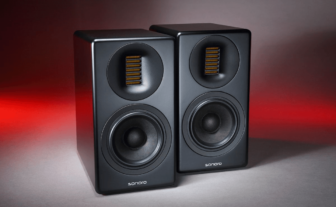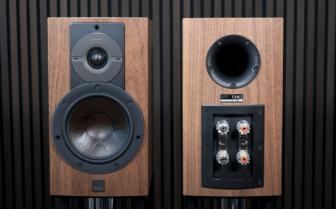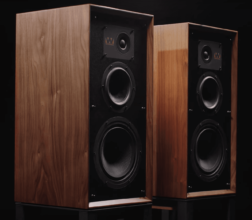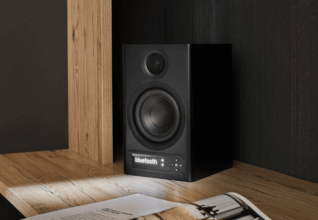ProAc K1 Review
With the K1, ProAc offers a high-end compact speaker, which with custom-made stands occupies the footprint of a floor-standing speaker and costs $12,800 per pair in total. Good thing the Brit is so musically talented.
By Marius Dittert
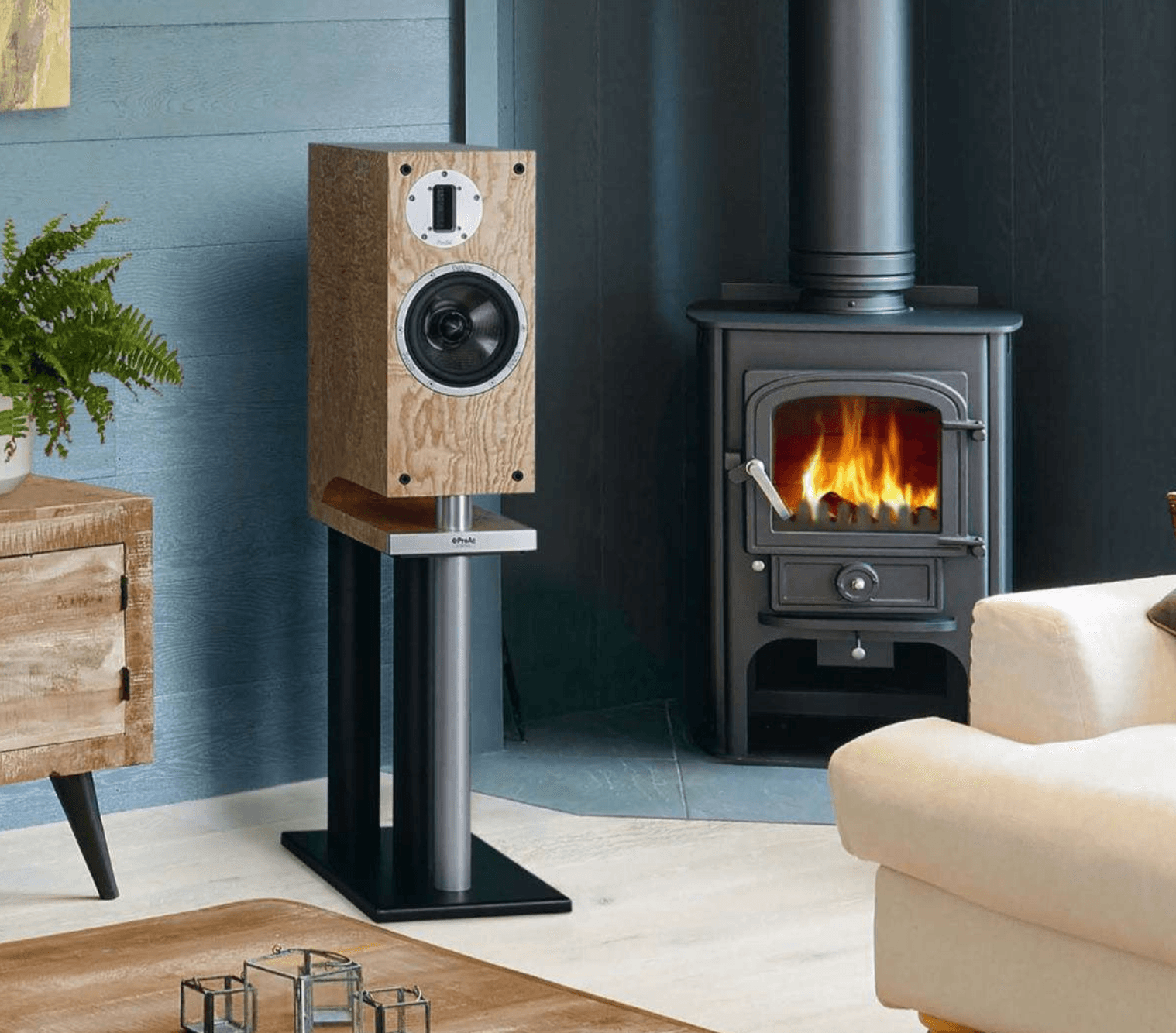
ProAc’s marketing claim is “perfectly natural.” That this is not just an advertising slogan was recently demonstrated to us by the floor-standing speaker Response D20R. Both our ears and our measurements, which proved to be very balanced, noted a harmoniously balanced sound that is not easy to put into words without falling into clichés.
ProAc’s compact but remarkably deep K1 model surpasses its half-price stablemate in terms of expressive music reproduction. However, its frequency response shows a rather pronounced bass and treble boost. But the music also (or especially) plays with the ProAc in the midrange—and this presented itself as balanced and low in distortion in our measurements. Furthermore, the mid and upper ranges of this rather unusually looking British box sounded almost electrostatically transparent and highly resolved. The bass boost is narrowband, while the highs gently and continuously rise. In short: Anyone who is concerned that the ProAc K1 overdoes it unduly can read on reassured, as the Brit is an exceptional talent.
The First of Its Kind
The K1 is the first compact loudspeaker from ProAc’s K Series. It gets its name due to the use of Kevlar as the cone material for the mid-bass drivers. In our test model, a 16.5 cm driver operates, which has to extend up to 3 kHz, since the rear-chamber-damped Alnico tweeter, typical of ribbon designs, is coupled at higher frequencies.
The front plate was developed by the company from Northamptonshire itself; the assembly of the premium tweeter, whose components come from all regions of the world, takes place in Great Britain. The HDF cabinet of the K1, available in various veneers, also originates from there. To optimize the sound of the 16-kilogram-per-box enclosure, ProAc opted for variable wall thicknesses and additional bitumen damping.
Before the listening test, a few remarks about the overall quality of the K1: It is fundamentally very good, but there are a few small weaknesses, such as the decision to use round spike locking nuts. Unlike hex locking nuts, these unfortunately cannot be tightened super tight. More important than ultimately tight spikes for the optimal setup of the ProAc, however, is its height position (see measurement comment). With the in-house ProAc stands, we were therefore on the safe side.
Resolution and Warmth
In the listening test with proven electronics from Exposure, Luxman, and Technics, our measurements were confirmed: The midrange of the ProAc sounded recessed, but extremely finely resolved and highly informative. Depending on the music material, this not unpleasant characteristic was more or less noticeable. From the author’s point of view, the K1 is thus a really wonderful tip for owners of large CD collections that contain many early digital recordings.
But the K1 hides nothing. Its special ability is to combine high resolution with subtle warmth. In this respect, it is among the most musically convincing transducers the reviewer knows.
If you sit in the near field and place the ProAc speakers far enough apart so that the focus in the middle between both boxes is just maintained, an impressive spatial effect results, as the author was able to determine with Mozart’s opera “Le Nozze Di Figaro” conducted by Georg Solti. The impressively large and deep soundstage is also likely the result of very good dispersion characteristics.
Besides the fascinating soundstage and the fact that the K1 became absolutely invisible as a transmission medium, its articulated, finely detailed, and highly lively vocal reproduction was particularly noticeable. The orchestral prelude also benefited from this, which thereby sounded especially authentic and lovingly rendered in the woodwind parts.
However, the bass of the K1 extended far less deep than the 28 Hertz claimed by the manufacturer. It made the compact speaker cleverly sound like more, without excessively thickening. And at the top end? Well, the ProAc offered a seductive degree of effortlessness, airiness, and silvery quality that had addictive potential.
CONCLUSION:
While the loudspeaker market generally demands more floor-standing models, ProAc ventures with the K1 into the realm of high-end compact speakers. Good thing, because even if the K1 doesn’t do everything “right,” it offers mid-high brilliance (and delicacy!) as well as a musically very finely balanced sound that should amaze in a suitable system.

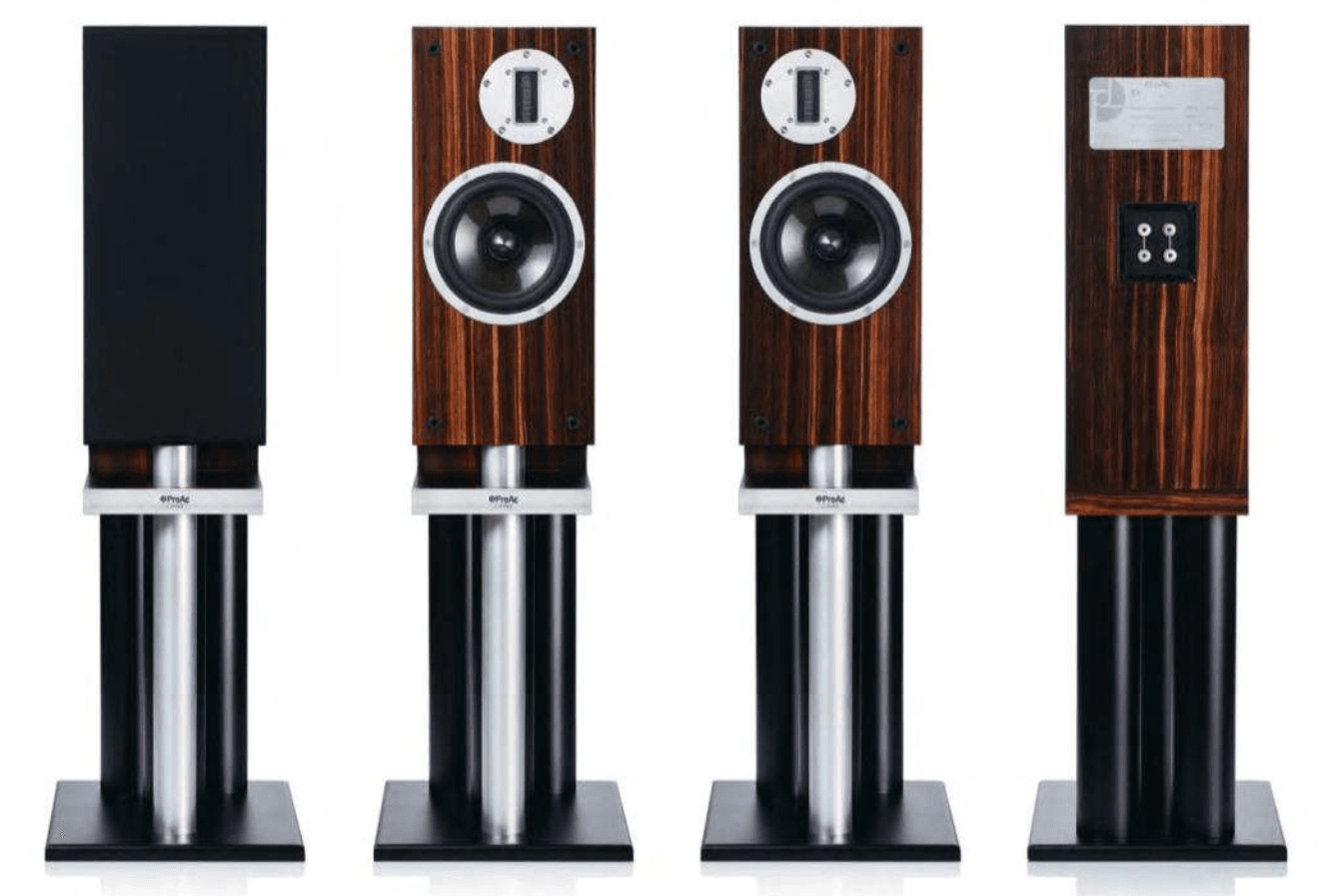
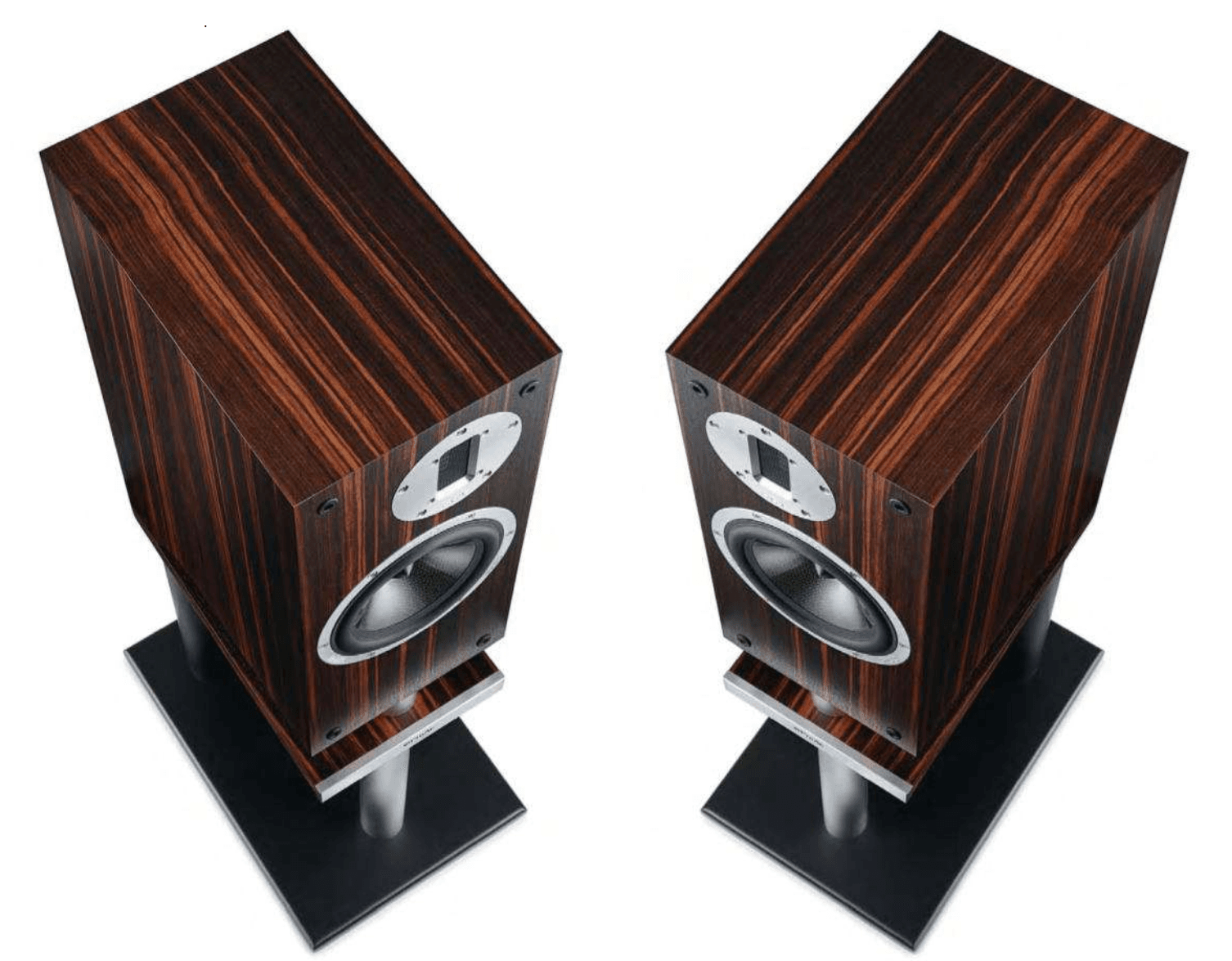
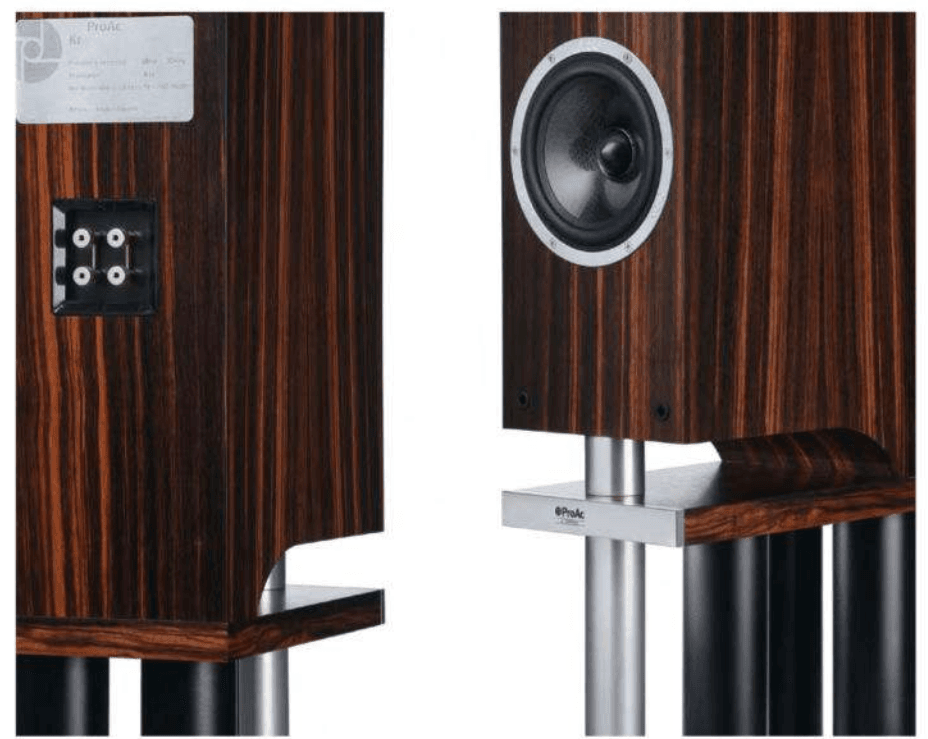
ProAc K1
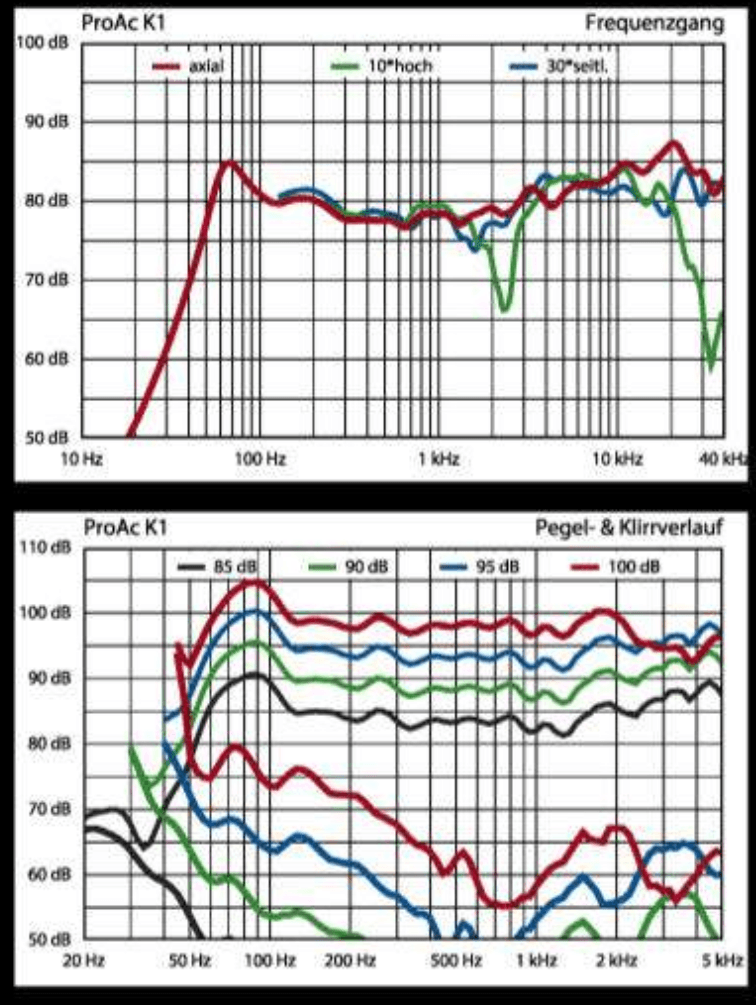
Quite pronounced bass/treble emphasis (approx. 5 dB), otherwise very balanced frequency response. Even sound dispersion, with a bundling of the highs starting above 12 kHz. The tweeter should be positioned as precisely as possible at ear level, otherwise a cancellation can occur as shown in the green graph. Cut-off frequency (−3/−6 dB): 47/43 Hz. Distortion behavior: low-distortion midrange, the tweeter reaches up to 5 dBSPL, the mid-bass driver 98 dBSPL. Overall clean time behavior, only slightly delayed decay of individual frequencies from 5 kHz upwards (not shown). Moderately high efficiency of 79 dB/2 V, amplifier power recommendation 40 W/8 Ω or 60 W/6 Ω.
AUDIO Score 76
Tech Specs
- Website: proac-loudspeakers.com
- List Price: €10,200 (approx. $11,000)
- Warranty: 3 years
- Dimensions (W × H × D): 21.0 × 56.9 × 40.1 cm
- Weight: 16 kg
- Finish: Veneer / Foil / Lacquer: Yes / No / No
- Color: Various veneers
- Design Principle: 2-way bass reflex
- Room Adaptation: None
- Special Features:
- Alnico ribbon tweeter
- Down-firing bass reflex port
Pros & Cons
✅ Pros:
✔ Transparent midrange
✔ Excellent vocal reproduction
✔ Wide stereo imaging
✔ High treble resolution
❌ Cons:
✘ Minor build quality weaknesses
✘ Expensive speaker stands
Ratings
| Category | 10-Point Scale |
|---|---|
| Neutrality | 9.7 |
| Detail Accuracy | 10.0 |
| Sound Localization | 9.1 |
| Spatial Presentation | 9.1 |
| Microdynamics | 9.1 |
| Max Volume | 8.6 |
| Bass Quality | 8.6 |
| Bass Depth | 8.1 |
| Build Quality | 9.0 |
Audio Benchmark
- Overall Rating: 160 Points (≈ 9.2/10)
- Price/Performance: High-End




